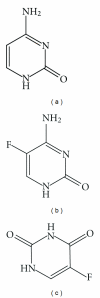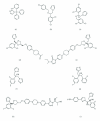Antifungal resistance and new strategies to control fungal infections
- PMID: 22187560
- PMCID: PMC3236459
- DOI: 10.1155/2012/713687
Antifungal resistance and new strategies to control fungal infections
Abstract
Despite improvement of antifungal therapies over the last 30 years, the phenomenon of antifungal resistance is still of major concern in clinical practice. In the last 10 years the molecular mechanisms underlying this phenomenon were extensively unraveled. In this paper, after a brief overview of currently available antifungals, molecular mechanisms of antifungal resistance will be detailed. It appears that major mechanisms of resistance are essential due to the deregulation of antifungal resistance effector genes. This deregulation is a consequence of point mutations occurring in transcriptional regulators of these effector genes. Resistance can also follow the emergence of point mutations directly in the genes coding antifungal targets. In addition we further describe new strategies currently undertaken to discover alternative therapy targets and antifungals. Identification of new antifungals is essentially achieved by the screening of natural or synthetic chemical compound collections. Discovery of new putative antifungal targets is performed through genome-wide approaches for a better understanding of the human pathogenic fungi biology.
Figures









References
-
- Morishita N, Sei Y. Microreview of Pityriasis versicolor and Malassezia species. Mycopathologia. 2006;162(6):373–376. - PubMed
-
- Thomas J, Jacobson GA, Narkowicz CK, Peterson GM, Burnet H, Sharpe C. Toenail onychomycosis: an important global disease burden. Journal of Clinical Pharmacy and Therapeutics. 2010;35(5):497–519. - PubMed
-
- Diamond RD. The growing problem of mycoses in patients infected with the human immunodeficiency virus. Reviews of Infectious Diseases. 1991;13(3):480–486. - PubMed
-
- Arendrup MC. Epidemiology of invasive candidiasis. Current Opinion in Critical Care. 2010;16(5):445–452. - PubMed
-
- Walsh TJ, Dixon DM. Spectrum of mycoses. In: Baron S, editor. Medical Microbiology. Galveston, Tex, USA: 1996. - PubMed
LinkOut - more resources
Full Text Sources
Other Literature Sources
Medical

